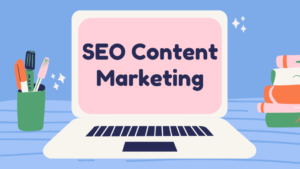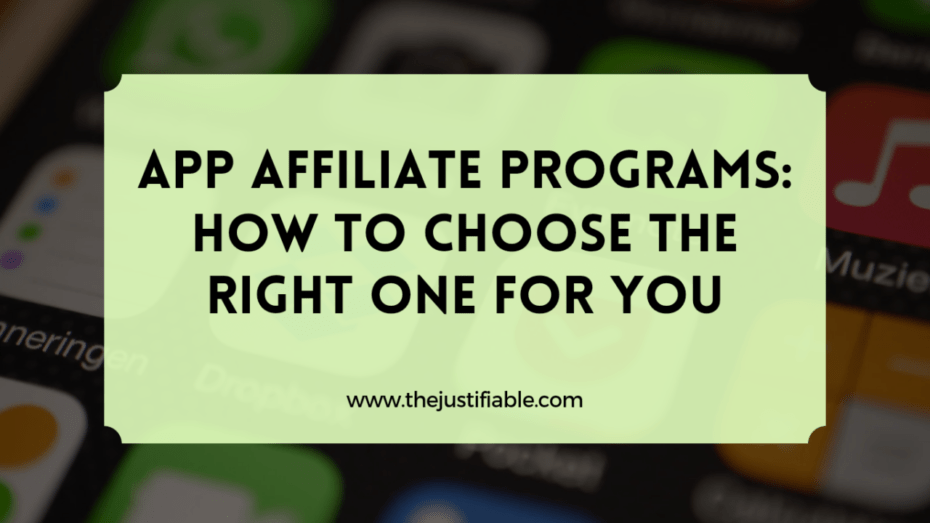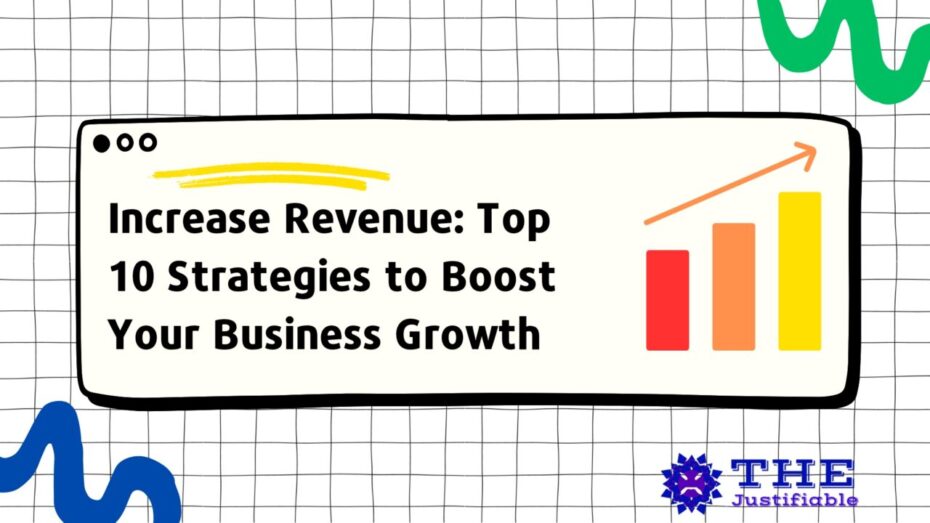Table of Contents
Marketing for business is essential for any entrepreneur looking to grow, but do you know which tactics actually work? How can you attract customers, build brand loyalty, and outshine your competition? Should you focus on digital marketing, traditional advertising, or a mix of both?
In this guide, we’ll break down the top marketing tactics every entrepreneur must know—from SEO and content marketing to social media strategies and paid ads. Whether you’re launching a startup or scaling an existing business, these proven techniques will help you maximize your reach, boost sales, and create a lasting impact in your industry. Let’s dive in!
The Importance of Marketing for Business Growth
Marketing is the engine that drives business growth. Without it, even the best products or services can go unnoticed. A well-planned marketing strategy ensures that businesses connect with their target audience, build brand trust, and increase revenue. Entrepreneurs who prioritize marketing for business are more likely to achieve sustainable growth and long-term success.
Understanding the Role of Marketing in Business Success
Marketing isn’t just about selling—it’s about creating relationships. Every successful business thrives on customer trust, and marketing plays a crucial role in establishing that connection.
A strong marketing strategy helps businesses:
- Identify and attract their ideal customers.
- Differentiate themselves from competitors.
- Build credibility and brand recognition.
Think about major brands like Apple or Nike. Their success isn’t solely due to high-quality products—it’s the way they market their products to create emotional connections with consumers. Marketing is what turns a simple product into a sought-after brand.
Beyond brand awareness, marketing also drives customer retention. Effective marketing strategies keep customers engaged long after the initial sale, encouraging repeat business and brand loyalty. Whether through content marketing, social media, or email campaigns, businesses that maintain a consistent marketing presence stay relevant in the minds of their customers.
How Marketing Impacts Brand Awareness and Revenue
Brand awareness is the foundation of every successful business. If potential customers don’t know a business exists, they won’t buy from it. Marketing ensures that a brand remains visible, memorable, and appealing to the right audience.
Here’s how marketing fuels revenue growth:
- Increases visibility: Whether through social media, search engines, or paid ads, marketing ensures that potential customers find the business.
- Boosts credibility: A well-marketed brand gains trust, and customers are more likely to buy from businesses they recognize.
- Encourages customer loyalty: Repeat customers spend more, and consistent marketing keeps them engaged.
For example, businesses investing in search engine optimization (SEO) attract organic traffic, meaning potential customers find them through Google searches. Meanwhile, social media marketing increases brand engagement, leading to higher conversion rates. Businesses that actively market themselves experience higher revenue growth than those that rely on word-of-mouth alone.
Common Mistakes Entrepreneurs Make in Marketing
Many entrepreneurs struggle with marketing, and it’s often due to avoidable mistakes. A poorly executed marketing plan can lead to wasted resources, low engagement, and missed opportunities.
Here are some of the most common pitfalls:
- Not having a clear target audience: Many businesses try to market to everyone, but the most effective strategies focus on a well-defined audience.
- Ignoring digital marketing: An online presence is essential. Neglecting SEO, social media, or email marketing can limit a business’s reach.
- Lack of consistency: Marketing isn’t a one-time effort. Businesses that post sporadically or change strategies too often struggle to build momentum.
- Not measuring results: Without tracking marketing performance, businesses can’t know what’s working or where to improve.
A common example is a startup investing heavily in social media ads without a clear strategy, only to see little return. Without proper targeting, engaging content, and tracking metrics, marketing efforts can fall flat.
Pro Tip: To avoid these mistakes, create a solid marketing plan with clear goals, choose the right platforms for your audience, and track your results consistently. Marketing should be a long-term investment, not an afterthought.
Creating a Strong Marketing Strategy for Your Business

A well-crafted marketing for business strategy is the foundation of long-term success. Without a clear roadmap, efforts can feel scattered, making it difficult to attract and retain customers. A strategic approach ensures that every marketing move aligns with business goals, maximizing growth and return on investment.
Essential Components of a Winning Marketing Strategy
Every successful marketing plan is built on key elements that work together to create a strong brand presence. Entrepreneurs who understand these core components can structure their strategies for better reach, engagement, and conversions.
A crucial element is identifying the target audience. Without knowing who the customers are, it’s impossible to craft messages that resonate. Entrepreneurs should study demographics, buying behavior, and pain points to create a marketing approach tailored to their ideal customers. This ensures that efforts are focused on the right people rather than wasting resources on broad, ineffective campaigns.
Brand positioning is another essential factor. How a business differentiates itself from competitors shapes the perception of potential customers. Clear messaging, a strong value proposition, and a consistent brand voice help build recognition and trust. This is particularly important in competitive markets, where standing out requires more than just a good product.
A winning strategy also includes content marketing. High-quality, valuable content attracts and nurtures leads, positioning the business as an authority. Whether it’s blog posts, videos, or infographics, content should align with customer needs and solve real problems. Beyond creation, content distribution through the right channels ensures it reaches the right audience at the right time.
Customer engagement plays a vital role as well. Building relationships through personalized interactions, email campaigns, and social media fosters loyalty. A brand that connects with its audience meaningfully is more likely to convert one-time buyers into repeat customers.
Setting Clear Marketing Goals and Objectives
Without well-defined goals, marketing efforts can feel like a shot in the dark. Setting measurable objectives ensures that every campaign serves a purpose and contributes to business growth.
A common mistake among entrepreneurs is setting vague goals like “increase sales” or “get more website traffic.” While these are valid objectives, they lack specificity. A stronger approach is using the SMART goal framework—making goals Specific, Measurable, Achievable, Relevant, and Time-bound. Instead of “increase sales,” a SMART goal might be “increase online sales by 20% in the next three months through targeted social media campaigns.”
Prioritizing goals based on business needs is equally important. Some businesses may need to build brand awareness, while others might focus on customer retention. Aligning marketing goals with business objectives ensures efforts are directed where they have the most impact.
Tracking progress is essential. Using tools like Google Analytics, email marketing reports, and social media insights helps measure performance and make necessary adjustments. Data-driven decision-making prevents wasted effort and improves the effectiveness of future campaigns.
Choosing the Right Marketing Channels for Your Business
Not all marketing channels are created equal. Choosing the right ones depends on where the target audience spends their time and how they prefer to interact with businesses. A strategic mix of online and offline channels can maximize reach and effectiveness.
Social media marketing is a powerhouse for businesses looking to engage with their audience. Platforms like Facebook, Instagram, LinkedIn, and TikTok offer opportunities for targeted advertising, community building, and direct customer interaction. Each platform serves a different purpose—Instagram excels in visual storytelling, LinkedIn is ideal for B2B marketing, and TikTok thrives on short-form, engaging content.
For businesses focusing on long-term digital growth, search engine optimization (SEO) is a must. Optimizing website content for search engines increases visibility and attracts organic traffic. A strong SEO strategy involves keyword research, quality content creation, and link-building efforts to improve rankings on platforms like Google.
Email marketing remains one of the most effective ways to nurture leads and retain customers. Personalized email campaigns can drive conversions by delivering targeted offers, educational content, and exclusive deals. The key is segmenting email lists to ensure that messages are relevant and engaging.
Traditional marketing methods like networking, print advertising, and event sponsorships still hold value in certain industries. Local businesses, for instance, benefit from community engagement through direct mail campaigns and in-person networking events. The effectiveness of these methods depends on the nature of the business and the preferences of its target market.
Digital Marketing Strategies That Drive Business Success
A strong marketing for business strategy in the digital space can make all the difference between a struggling brand and a thriving one. With so many online channels available, knowing which strategies work best for engagement, visibility, and conversions is key. Let’s explore three of the most impactful digital marketing tactics that can help businesses scale efficiently.
The Power of SEO and Content Marketing
A well-optimized website is the foundation of a successful digital marketing strategy. Search Engine Optimization (SEO) ensures that your business appears in search results when potential customers look for related products or services. Without it, even the best content can get lost in the vast sea of online information.
SEO starts with keyword research, helping businesses identify the terms their audience is searching for. Strategic use of these keywords in website content, blog posts, and meta descriptions improves rankings on search engines like Google. However, SEO isn’t just about keywords—it’s also about user experience (UX). A fast-loading, mobile-friendly website with intuitive navigation keeps visitors engaged and reduces bounce rates.
Content marketing complements SEO by providing valuable, relevant information that builds trust with audiences. Blogs, videos, infographics, and podcasts are all powerful ways to engage users and position a brand as an industry authority. High-quality content doesn’t just attract visitors—it keeps them coming back and encourages them to take action.
Another aspect of content marketing is thought leadership. Businesses that share expert insights, case studies, and educational resources gain credibility and attract high-intent customers. A company that consistently delivers helpful, well-researched content becomes the go-to source in its industry.
Pro Tip: Keep SEO and content marketing efforts aligned. A blog post optimized for the right keywords but lacking depth won’t perform well. Focus on quality over quantity—a few well-researched, high-value pieces will outperform frequent, shallow content.
How to Leverage Social Media for Business Growth
Social media has transformed how businesses interact with their audience. It’s no longer just a place for casual conversations—it’s a powerful tool for customer engagement, brand awareness, and direct sales.
Choosing the right social media platform is essential. Each platform serves different business needs:
- Instagram and TikTok work well for visually-driven brands.
- LinkedIn is ideal for B2B networking and authority building.
- Facebook remains strong for community-building and targeted ads.
- Twitter is great for quick updates and real-time conversations.
Once a business identifies where its audience spends time, it can tailor content to match platform expectations. Short-form videos, live streams, and interactive posts tend to perform well across most networks. Authenticity is key—consumers connect more with brands that feel real and approachable rather than overly polished or corporate.
Paid social media advertising accelerates results. With advanced targeting options, businesses can reach specific demographics, retarget website visitors, and run lookalike audience campaigns. The ability to test and optimize ads in real time makes social media advertising one of the most cost-effective marketing strategies.
Engagement matters just as much as content. Responding to comments, joining conversations, and building a community turns passive followers into loyal brand advocates. The more interaction a post gets, the more visibility it gains due to platform algorithms favoring engagement.
Email Marketing Strategies for Customer Retention
While newer marketing trends emerge, email marketing remains one of the most effective ways to nurture leads and retain customers. Unlike social media, where algorithms control visibility, email marketing allows businesses to communicate directly with their audience.
Building a high-quality email list is the first step. Rather than buying lists, businesses should focus on organic growth strategies, like offering:
- Lead magnets (free eBooks, checklists, or discounts)
- Exclusive access to deals, events, or behind-the-scenes content
- Personalized recommendations based on user preferences
Segmenting email lists ensures that the right message reaches the right people. Not all subscribers have the same interests or purchasing behavior. Sending generic emails to everyone often leads to lower open rates and increased unsubscribes. Instead, segment based on factors like past purchases, engagement levels, and demographics to deliver targeted content.
Automation makes email marketing more efficient. Drip campaigns—automated sequences triggered by user actions—help nurture leads without constant manual effort. For example, when someone signs up for a newsletter, they can receive a welcome series introducing them to the brand, followed by product recommendations based on browsing behavior.
Beyond automation, personalization boosts engagement. Emails that include the recipient’s name, recommend products based on previous purchases, or acknowledge special occasions (like birthdays) feel more tailored and human. People are far more likely to open and interact with an email that feels like it was written specifically for them.
Traditional Marketing Tactics That Still Work Today

Even in an era dominated by digital strategies, marketing for business doesn’t have to be entirely online. Many traditional marketing tactics remain highly effective, especially when combined with digital efforts. Businesses that incorporate a mix of both can create well-rounded campaigns that engage customers in multiple ways.
The Value of Print Advertising in the Digital Age
Print advertising might seem outdated, but it still holds value, especially for businesses targeting local audiences. While digital ads can be easily skipped or ignored, a well-placed print ad in a magazine, newspaper, or billboard has a longer shelf life and can leave a lasting impression.
One of the strengths of print advertising is its tangible nature. Unlike digital content that disappears with a scroll, print materials—whether in a newspaper, brochure, or business card—stay in customers’ hands. This physical interaction creates a stronger connection and makes a brand more memorable.
High-end brands continue investing in print advertising because it conveys credibility and prestige. Seeing a business in a respected publication builds trust, particularly among audiences who still prefer traditional media over digital channels. Luxury brands, healthcare providers, and local service businesses often see strong returns from print marketing.
Print ads also offer less competition for attention. Digital spaces are flooded with countless ads, emails, and social media posts, making it difficult for a brand to stand out. A well-designed print ad in a relevant publication reaches an audience in a more focused environment, where they are likely to engage with the content.
Pro Tip: Use QR codes in print ads to bridge the gap between offline and online marketing. This allows customers to quickly access a website, special offer, or video with a simple scan.
Direct Mail Marketing: Does It Still Generate Results?
Despite the rise of email marketing, direct mail campaigns continue to be an effective tool for businesses looking to reach targeted customers. The key to success lies in personalization, creative design, and a compelling message that encourages action.
Direct mail works because it feels more personal. Unlike a generic email that can be ignored or deleted within seconds, a well-crafted mail piece—such as a handwritten note, a customized postcard, or a special offer—grabs attention and creates a personal connection. Studies show that direct mail has higher response rates than email marketing, as people are more likely to open and read physical mail.
Another advantage is its targeting capabilities. Businesses can send mail specifically to their ideal customers based on location, income, or past purchasing behavior. Local businesses, real estate agents, and service-based industries often find direct mail campaigns highly effective in driving foot traffic and inquiries.
Creativity plays a huge role in making direct mail stand out. A standard postcard might be ignored, but a well-designed, interactive piece—such as a scratch-off discount, a sample product, or an invitation—piques curiosity and increases engagement.
One challenge with direct mail is cost. Printing, postage, and design require a larger budget compared to digital alternatives. However, a well-executed campaign can yield a strong return on investment when sent to the right audience with a clear and enticing call to action.
Networking and Referral Marketing for Business Growth
Word-of-mouth marketing remains one of the most powerful and cost-effective ways to grow a business. Customers trust recommendations from people they know, making referrals a valuable asset for any entrepreneur.
Networking is essential for building strong relationships with potential clients, business partners, and industry influencers. Attending local events, joining business associations, or participating in industry conferences provides opportunities to connect with like-minded professionals and establish trust. Personal interactions often lead to valuable collaborations and direct customer referrals.
Referral marketing takes networking a step further by encouraging satisfied customers to spread the word about a business. Offering referral incentives, such as discounts, free products, or exclusive rewards, motivates customers to recommend a business to their friends and family. Studies show that referred customers have a higher lifetime value and are more likely to stay loyal compared to customers acquired through traditional advertising.
Another effective strategy is partnering with complementary businesses. For example, a fitness trainer might collaborate with a health food store, or a wedding photographer could team up with a florist. These partnerships allow businesses to tap into each other’s customer base without competing.
The key to successful networking and referral marketing is authenticity. People can tell when a recommendation is forced or insincere. Building genuine relationships and providing exceptional service naturally leads to word-of-mouth referrals.
Social Media Marketing for Business Expansion
Social media has transformed how businesses connect with their audience. A well-executed marketing for business strategy on social platforms can significantly boost brand visibility, customer engagement, and sales. The key is knowing which platforms to use, how to create compelling content, and how to measure success effectively.
Choosing the Best Social Media Platforms for Your Business
Not all social media platforms work the same for every business. Choosing the right ones depends on factors like target audience, industry, and content type. Businesses that focus their efforts on the most relevant platforms see better engagement and higher returns.
For visually driven brands, Instagram and TikTok are powerful tools. Instagram works well for product showcases, influencer collaborations, and storytelling through images and reels. TikTok, on the other hand, thrives on short, engaging videos that can go viral quickly. Businesses targeting younger demographics often find success here.
LinkedIn is ideal for B2B companies, consultants, and professionals looking to establish authority in their industry. It’s a great place to share thought leadership articles, network with potential clients, and engage with industry trends. Meanwhile, Facebook remains strong for community building, local businesses, and targeted advertising due to its extensive user base.
For businesses focusing on real-time engagement, Twitter can be useful. It’s effective for customer service, industry news, and direct interactions with audiences. Meanwhile, Pinterest works well for lifestyle, fashion, and DIY brands, as users actively search for inspiration and product ideas.
Creating Engaging Content to Boost Brand Engagement
Content is the heart of social media marketing. Without engaging and valuable content, even the best platform selection won’t yield results. Businesses must focus on creating material that informs, entertains, or inspires their audience.
One of the best strategies is storytelling. Instead of pushing sales messages, brands that share behind-the-scenes moments, customer success stories, and brand values build stronger connections. Audiences are more likely to engage with content that feels authentic and relatable rather than overly promotional.
Interactive content also drives engagement. Polls, quizzes, live Q&A sessions, and contests encourage audience participation, making followers feel involved. When people engage with content, algorithms reward it with greater visibility, helping businesses reach more potential customers.
Video content continues to dominate. Whether it’s short-form content on TikTok and Instagram Reels or long-form educational videos on YouTube, video marketing captures attention quickly. Brands that invest in high-quality, engaging video content often see higher levels of interaction and shares.
User-generated content (UGC) is another powerful tool. Encouraging customers to share their experiences, reviews, and testimonials builds trust and authenticity. A potential customer is far more likely to believe a peer’s recommendation over a direct brand advertisement.
Best Practice: Stick to the 80/20 rule—80% of content should educate, entertain, or engage, while only 20% should directly promote products or services. This keeps followers interested and prevents content from feeling overly sales-driven.
Measuring Social Media Success with Analytics
Tracking performance is crucial to refining any marketing for business strategy. Without analytics, businesses have no way of knowing what’s working and what needs improvement.
Key performance indicators (KPIs) help measure success. Some essential KPIs include:
- Engagement rate: Measures likes, comments, shares, and overall interactions. High engagement indicates that content resonates with the audience.
- Reach and impressions: Determines how many people see a post. A growing reach suggests strong brand awareness.
- Click-through rate (CTR): Shows how many people click on a link in a post. This helps measure how effective call-to-actions (CTAs) are.
- Conversion rate: Tracks how many social media visitors take a desired action, such as signing up for a newsletter or making a purchase.
Social media platforms offer built-in analytics tools to track these metrics. Facebook Insights, Instagram Analytics, LinkedIn Analytics, and Twitter Analytics provide valuable data on post performance, audience demographics, and engagement trends.
To get deeper insights, businesses can use third-party tools like Google Analytics, Hootsuite, or Sprout Social to track cross-platform performance and ROI. These tools help identify trends, test new strategies, and refine content approaches based on actual data.
Content Marketing Strategies to Attract and Convert Customers

A well-planned marketing for business strategy isn’t complete without content marketing. Creating valuable content that informs, entertains, or solves problems helps attract potential customers and build lasting relationships. Whether through blogs, videos, or podcasts, businesses can position themselves as industry leaders while driving traffic and conversions.
Blogging for Business: Why It’s Essential for Growth
Blogging remains one of the most effective content marketing strategies. It provides businesses with a platform to educate their audience, establish credibility, and improve search engine rankings. A blog isn’t just a place for random thoughts—it’s a powerful lead-generation tool when done right.
One of the biggest benefits of blogging is SEO visibility. Businesses that publish high-quality, keyword-optimized blog posts consistently rank higher on search engines. When potential customers search for solutions, well-written blog content can guide them directly to a business’s website.
Beyond SEO, blogging builds trust and authority. Readers appreciate informative, well-researched content that answers their questions or offers solutions to their problems. Instead of pushing sales messages, valuable blog posts position a business as a helpful resource. Over time, this trust translates into brand loyalty and customer conversions.
Another advantage of blogging is its long-term impact. Unlike social media posts that disappear quickly, a well-optimized blog post continues to attract visitors for months—or even years. Evergreen content, such as how-to guides and industry insights, keeps generating traffic long after it’s published.
A blog also provides shareable content for social media and email marketing. Businesses can repurpose blog posts into bite-sized content for Instagram, LinkedIn, or newsletters, maximizing engagement across multiple platforms.
Video Marketing: A Game-Changer for Business Promotion
Video content is more engaging than text alone. With attention spans shrinking, businesses that invest in video marketing can capture their audience’s interest more effectively and drive higher engagement.
One reason video is so powerful is its ability to convey messages quickly. A one-minute video can communicate more than a page of written content. Whether through explainer videos, behind-the-scenes footage, or customer testimonials, businesses can create emotional connections that are hard to achieve through text alone.
Video also boosts social media engagement. Platforms like Instagram, TikTok, and YouTube prioritize video content, making it more likely to reach a wider audience. Businesses that produce short, attention-grabbing videos see higher interactions and brand visibility.
For website traffic, video marketing improves SEO rankings. Google favors pages with video content, as it signals quality and engagement. A well-placed video on a landing page can also increase conversion rates, helping turn visitors into customers.
Live streaming is another game-changer. Hosting live Q&A sessions, product demonstrations, or behind-the-scenes events fosters real-time engagement, allowing businesses to connect directly with their audience and address concerns on the spot.
How to Use Webinars and Podcasts for Brand Authority
Webinars and podcasts offer a unique opportunity to connect with an audience on a deeper level. Unlike short-form content, these formats allow businesses to provide in-depth discussions, expert insights, and educational content that positions them as industry leaders.
A major advantage of webinars is their interactive nature. Unlike pre-recorded videos, webinars let businesses engage with attendees in real time, answer questions, and build personal connections. Whether used for training, product demonstrations, or industry insights, webinars create trust and credibility.
Podcasts, on the other hand, cater to audiences who prefer on-the-go content. Many people listen to podcasts while driving, working, or exercising, making it an excellent medium for reaching busy professionals. Businesses that consistently release valuable podcast episodes can establish themselves as thought leaders and build a loyal listener base.
One of the strengths of podcasts is their ability to create a personal connection. Hearing a business owner or expert speak directly to an audience fosters a sense of familiarity and trust. Over time, this builds brand loyalty and makes listeners more likely to engage with the business.
Repurposing webinar and podcast content extends its lifespan. Key insights from a webinar can be turned into blog posts, social media clips, or infographics. Similarly, podcast episodes can be transcribed into articles or shared as bite-sized audio clips.
Search Engine Optimization (SEO) for Business Growth
A strong marketing for business strategy isn’t complete without SEO. It helps businesses rank higher on search engines, attract organic traffic, and increase conversions. Whether you’re a startup or an established brand, understanding SEO fundamentals is essential for long-term success.
The Basics of SEO Every Entrepreneur Should Know
SEO can seem complex, but at its core, it’s about making a website easier to find and more valuable to search engines and users. Understanding a few foundational concepts can help any business build a strong online presence.
One of the first steps in SEO is keyword research. Identifying what potential customers are searching for allows businesses to create content that aligns with those needs. Using relevant keywords naturally within website content, blog posts, and meta descriptions improves search rankings without feeling forced.
Another key factor is website optimization. A slow, cluttered, or mobile-unfriendly site discourages visitors and hurts rankings. Google prioritizes fast-loading, well-structured websites that provide a great user experience. Entrepreneurs should focus on site speed, mobile responsiveness, and intuitive navigation.
Content quality plays a massive role in SEO success. Search engines favor websites that offer valuable, well-researched, and engaging content. Regularly updating blogs, FAQs, and guides ensures a site remains relevant and attracts consistent traffic.
Backlinks—links from other reputable websites—are another critical ranking factor. When credible sources link to a business’s content, it signals authority to search engines. Building a strong backlink profile through guest blogging, partnerships, and high-quality content improves rankings and credibility.
On-Page vs. Off-Page SEO: What Matters Most?
Understanding the difference between on-page and off-page SEO is essential for a balanced strategy. Both play a role in improving rankings and driving organic traffic.
On-page SEO refers to optimizations made directly on a website. This includes:
- Optimized content with relevant keywords and valuable insights.
- Meta titles and descriptions that encourage clicks from search results.
- Internal linking to connect related pages and improve navigation.
- Mobile-friendliness to ensure a seamless experience on all devices.
On-page SEO ensures a website is structured correctly and provides content that matches user intent. Without it, even the best marketing efforts can struggle to gain traction.
Off-page SEO focuses on factors outside the website that influence search rankings. This includes:
- Backlinks from reputable sources, which signal authority and trustworthiness.
- Social media presence, as engagement can indirectly impact SEO.
- Brand mentions across the web, even without direct links.
While both are important, on-page SEO lays the foundation for visibility, while off-page SEO builds credibility. A combination of both strategies ensures a well-rounded SEO approach.
Local SEO Strategies to Attract More Customers
For businesses targeting local customers, local SEO is a game-changer. It ensures that a business appears in search results when people look for services in their area.
A critical element of local SEO is Google My Business (GMB). Optimizing a GMB profile with accurate business information, photos, and customer reviews helps businesses rank higher in local search results. Encouraging satisfied customers to leave positive reviews enhances credibility and visibility.
Local keywords also play a role. Including location-specific phrases like “best coffee shop in Chicago” or “plumber near me” within website content helps attract nearby customers. Businesses should ensure their name, address, and phone number (NAP) are consistent across all online directories to avoid confusion and ranking penalties.
Building local backlinks boosts credibility. Partnering with local businesses, getting featured in local news outlets, and joining community events increase a brand’s presence in the area. These mentions signal to search engines that a business is an important local authority.
Mobile optimization is especially important for local searches. Many users look for businesses on the go, so ensuring a mobile-friendly website with click-to-call buttons and quick-loading pages increases conversions.
Email Marketing Tactics to Increase Customer Engagement
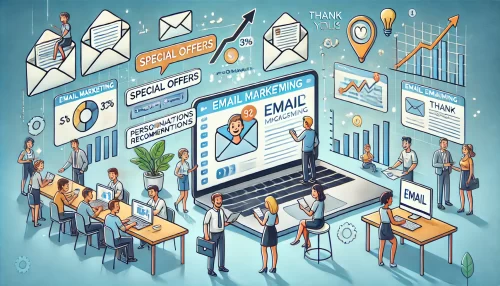
An effective marketing for business strategy isn’t complete without email marketing. It remains one of the highest-converting digital channels, allowing businesses to nurture relationships, increase customer loyalty, and drive consistent engagement. When executed properly, email marketing can turn casual subscribers into repeat buyers.
Crafting High-Converting Email Campaigns
Writing a compelling email is both an art and a science. Every email a business sends should have a clear purpose, whether it’s promoting a product, sharing valuable content, or nurturing customer relationships. A well-crafted email encourages recipients to open, read, and take action.
A strong subject line is the first step. Since people receive countless emails daily, the subject line must grab attention without sounding spammy. Personalization—such as including the recipient’s name or referencing a past purchase—boosts open rates significantly. A subject line like “John, your exclusive discount expires tonight!” feels more direct and engaging than a generic “Special Offer Inside.”
The email body should be concise yet impactful. Readers typically skim through emails, so key information should be presented early. Short paragraphs, bullet points (when necessary), and bolded text for important details improve readability. Calls-to-action (CTAs) must be clear and direct—whether it’s “Shop Now,” “Download Your Guide,” or “Reserve Your Spot.”
Mobile optimization is also crucial. Many users check emails on their phones, so emails should be formatted to display correctly on smaller screens. Simple layouts, large buttons, and easy-to-read fonts enhance the mobile experience.
Personalization extends beyond names. Recommending products based on past behavior, celebrating birthdays with special offers, or tailoring content based on preferences makes emails feel customized. People engage more when they feel a business understands their needs.
Building and Segmenting Your Email List for Better Results
A high-quality email list is the foundation of successful email marketing. However, bigger doesn’t always mean better. A small, highly engaged email list often outperforms a large list of inactive subscribers.
Growing an email list organically ensures that subscribers are genuinely interested. Offering lead magnets—such as free eBooks, discount codes, or exclusive access to content—in exchange for email signups is a proven strategy. Signup forms should be placed strategically across websites, social media pages, and blog posts.
Once a list is built, segmenting subscribers improves engagement and reduces unsubscribe rates. Sending the same email to an entire list rarely works because different subscribers have different interests and behaviors. Segmentation allows businesses to tailor emails based on:
- Demographics (age, location, job title)
- Purchase history (first-time buyers vs. repeat customers)
- Engagement levels (active readers vs. those who haven’t opened emails in months)
- Interests (based on past clicks and website activity)
For example, someone who recently abandoned their shopping cart should receive a reminder email with a limited-time discount, while a long-time customer might appreciate an exclusive VIP offer. Targeted emails create a better experience and lead to higher open and conversion rates.
Regular list cleaning ensures a healthy email list. Removing inactive subscribers or sending re-engagement emails to dormant contacts prevents emails from landing in spam folders. A well-maintained list keeps deliverability rates high and ensures campaigns reach the right people.
Automation in Email Marketing: Save Time and Boost ROI
Manual email marketing is time-consuming and inefficient, especially for businesses with large customer bases. Email automation solves this problem, allowing businesses to send personalized, timely messages without constant manual effort.
One of the most powerful automation tools is welcome email sequences. When a new subscriber joins, they should receive a warm, engaging welcome email introducing them to the brand, setting expectations, and offering immediate value (such as a discount or exclusive content). Businesses that send welcome emails see higher long-term engagement rates than those that don’t.
Drip campaigns help nurture leads by sending a series of pre-written emails over time. For example, an e-commerce business can set up a 5-email sequence for new subscribers:
- Welcome email with an introduction and discount.
- Product showcase featuring bestsellers or recommendations.
- Customer testimonials to build trust.
- Limited-time offer to encourage purchase.
- Final reminder email before the offer expires.
Cart abandonment emails are another must-have automation. Many shoppers leave items in their carts without checking out. Sending a gentle reminder with a time-sensitive discount increases conversion rates significantly.
Post-purchase automation enhances customer relationships. A thank-you email after a purchase, followed by product usage tips or personalized recommendations, helps keep customers engaged and increases repeat sales.
Influencer and Affiliate Marketing for Business Growth
An effective marketing for business strategy often includes leveraging partnerships. Influencer and affiliate marketing have become two of the most powerful methods for expanding brand reach, increasing sales, and building trust with potential customers. When executed correctly, both can drive significant long-term revenue growth.
How to Choose the Right Influencers for Your Brand
Not all influencers are created equal. The right influencer can introduce a brand to thousands—or even millions—of potential customers, but choosing the wrong one can lead to wasted resources and missed opportunities. Selecting the right influencer requires careful planning and consideration.
The first step is defining campaign goals. Some businesses may want to increase brand awareness, while others might focus on driving direct sales. An awareness campaign may benefit from an influencer with high engagement, while a sales-driven campaign might require a partnership with someone who has a track record of converting followers into buyers.
Audience alignment is another critical factor. An influencer’s followers should match the business’s target customers. If a brand sells eco-friendly beauty products, partnering with a sustainability-focused influencer makes more sense than working with a tech reviewer. Brands should analyze an influencer’s audience demographics, interests, and location to ensure a good fit.
Engagement rates often matter more than follower count. A micro-influencer with 20,000 highly engaged followers can drive more conversions than a celebrity with millions of passive followers. Checking metrics like likes, comments, and shares helps determine how connected an influencer is to their audience.
Authenticity plays a key role in influencer success. Followers trust influencers who genuinely align with the brands they promote. A sudden, out-of-character sponsorship can feel forced, leading to skepticism. Partnering with influencers who already use or appreciate a brand’s products ensures a more organic promotion.
Setting Up an Effective Affiliate Marketing Program
Affiliate marketing is another performance-driven strategy that allows businesses to reward partners for referring new customers. Unlike influencer marketing, where businesses typically pay upfront for promotions, affiliate marketing works on a commission-based structure—brands only pay when a sale is made.
The first step in setting up an affiliate program is choosing the right commission structure. Businesses can offer a flat-rate payment per sale or a percentage-based commission. For instance, an online course provider might offer affiliates 30% of every sale, while an e-commerce store could pay $10 per referred customer. Finding a balance between profitability and incentive is key.
Selecting the right affiliates is just as important as choosing influencers. Affiliates should have an engaged audience that trusts their recommendations. Bloggers, YouTubers, niche website owners, and even customers who love a brand can become successful affiliates.
A seamless tracking system ensures that businesses accurately attribute sales to affiliates. Using software like Post Affiliate Pro, Awin, or Amazon Associates provides unique tracking links for affiliates. These tools also help businesses monitor conversions, analyze performance, and optimize campaigns.
Providing marketing materials simplifies the affiliate’s job and increases conversions. Custom banners, product images, email templates, and promotional copy help affiliates market the product effectively. Affiliates who receive strong support from brands tend to generate better results.
Measuring ROI in Influencer and Affiliate Marketing
Tracking return on investment (ROI) is crucial for both influencer and affiliate marketing. Without proper measurement, businesses risk overspending on campaigns that don’t generate meaningful results.
A simple way to track influencer marketing success is using unique discount codes or referral links. By assigning each influencer a specific code, businesses can see exactly how many sales they generate. This approach helps determine which influencers provide the highest ROI and allows for data-driven decision-making.
Engagement metrics also provide valuable insights. High impressions, likes, shares, and comments indicate strong audience interaction, even if immediate sales aren’t generated. An influencer post that sparks conversations and gets shared widely can contribute to long-term brand awareness.
Affiliate marketing success is often measured through conversion rates. If 100 people click on an affiliate link but only 2 make a purchase, the conversion rate is 2%. Monitoring these numbers helps businesses refine strategies, optimize commission structures, and improve affiliate onboarding.
Long-term performance is just as important as short-term wins. Some influencer and affiliate campaigns generate instant results, while others create brand trust that leads to future purchases. Businesses should track revenue trends over time to understand the bigger picture.
Data-Driven Marketing for Smarter Business Decisions
Making informed decisions is essential for any marketing for business strategy. Data-driven marketing allows businesses to move beyond guesswork, using real insights to optimize campaigns, target the right audience, and improve overall performance. When businesses analyze the right data, they can create more effective strategies that drive measurable results.
Why Data Analytics is Crucial for Marketing Success
Marketing without data is like navigating without a map. Businesses that rely on analytics can see what’s working, what isn’t, and how to improve their efforts. Data analytics provides a clear picture of customer behavior, campaign performance, and market trends, allowing businesses to make smarter decisions.
One major advantage of data-driven marketing is personalization. Customers expect tailored experiences, and businesses that analyze their preferences can create targeted campaigns that feel relevant. Personalized emails, product recommendations, and customized ads lead to higher engagement and conversion rates compared to generic marketing messages.
Another key benefit is budget optimization. Instead of spending money on ineffective ads or strategies, data helps businesses allocate their resources wisely. If analytics show that social media ads bring better returns than traditional print ads, a business can shift its budget accordingly, maximizing ROI.
Data also enhances competitor analysis. Businesses can track industry trends, monitor competitor strategies, and identify gaps in the market. This allows them to stay ahead by adopting winning tactics and avoiding costly mistakes.
Tracking and Measuring Key Marketing Metrics
Understanding which metrics matter most is crucial for marketing for business success. Not all data points are equally valuable, so businesses need to track the ones that provide meaningful insights into their marketing performance.
Website traffic and engagement are fundamental metrics. Knowing how many people visit a website, how long they stay, and which pages they interact with helps businesses optimize content and improve user experience. High bounce rates, for example, might indicate that a website needs better navigation or more engaging content.
Conversion rates measure how well a campaign turns visitors into customers. Whether it’s signing up for a newsletter, downloading an eBook, or making a purchase, tracking conversion rates helps businesses understand what’s driving customer actions—and what’s not.
Customer acquisition cost (CAC) is another critical metric. It calculates how much it costs to acquire a new customer. If a business spends $50 on ads to gain one customer who only makes a $40 purchase, adjustments are needed. The goal is to keep CAC lower than the average customer lifetime value.
Social media engagement provides insights into how well content resonates with an audience. Metrics like likes, shares, comments, and click-through rates indicate which posts generate the most interest and where improvements can be made.
Using Customer Insights to Improve Marketing Campaigns
Customer data is one of the most powerful tools for refining marketing strategies. Businesses that listen to their audience and analyze their behavior can create campaigns that feel more personalized, relevant, and effective.
One way to gather insights is through customer surveys and feedback forms. Asking customers about their experiences, preferences, and pain points provides direct input that can shape future marketing efforts. A simple post-purchase survey can reveal what influenced a customer’s decision and what might make them return.
Another method is behavioral tracking. Analyzing customer interactions on a website, such as which products they view most or how often they return, helps businesses understand their interests. This information can be used to create targeted campaigns, such as abandoned cart emails that remind shoppers to complete their purchases.
Social media listening is also valuable. Monitoring comments, reviews, and discussions about a brand or industry can uncover trends and areas for improvement. If multiple customers mention a common frustration, addressing it in marketing campaigns can build trust and engagement.
AI and machine learning tools take customer insights a step further. These technologies can predict future buying behavior, segment audiences more precisely, and recommend personalized marketing strategies based on past interactions. Businesses that invest in these tools gain a competitive edge in customer targeting and engagement.
Paid Advertising Strategies for Business Growth
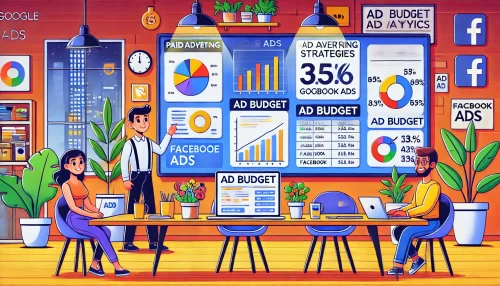
A well-executed marketing for business strategy often includes paid advertising to accelerate results. While organic marketing builds long-term trust, paid ads provide immediate visibility, bringing in targeted traffic, leads, and sales. Choosing the right platforms and techniques can maximize returns and ensure a sustainable advertising strategy.
Google Ads vs. Social Media Ads: Which is Better?
Businesses often face a tough choice between Google Ads and social media ads. Each platform offers unique benefits, and selecting the right one depends on the target audience, industry, and marketing goals.
Google Ads operates on an intent-based model. Users actively search for products or services, meaning ads appear at the moment they’re looking to buy. This makes Google Ads ideal for businesses that rely on high-intent searches—like local services, e-commerce, or B2B solutions. With keyword targeting, businesses can attract ready-to-purchase customers rather than hoping for casual engagement.
On the other hand, social media ads focus on audience interest and behavior rather than direct intent. Platforms like Facebook, Instagram, LinkedIn, and TikTok allow businesses to create highly visual, engaging content that captures attention. These ads are perfect for brand awareness, lead generation, and impulse-driven purchases. Social media also enables detailed targeting based on demographics, interests, and behaviors, making it an effective tool for niche markets.
Both platforms offer strong retargeting options, allowing businesses to reach potential customers who have interacted with them before. Google Ads excels in search-based conversions, while social media ads build relationships and keep brands top of mind.
Retargeting Strategies to Convert Lost Leads
Not every visitor converts on the first interaction. Retargeting helps bring back potential customers who have shown interest but didn’t complete a purchase or inquiry. With the right approach, businesses can recover lost leads and boost conversion rates.
One of the most effective retargeting methods is website retargeting. When someone visits a website but leaves without taking action, retargeting ads remind them about the business across different platforms. These ads can appear on social media, search engines, or display networks, keeping the brand visible until the customer is ready to act.
Abandoned cart retargeting is particularly powerful for e-commerce businesses. A user who adds products to their cart but doesn’t check out can receive an email or an ad encouraging them to complete their purchase. Including a limited-time discount or free shipping offer increases the chances of conversion.
Engagement-based retargeting focuses on users who have interacted with a brand but haven’t converted. This could include people who watched a video, liked a social media post, or clicked on an email link. Serving them with relevant ads—such as testimonials or special promotions—keeps them engaged and encourages them to take the next step.
Budgeting for Paid Advertising: Best Practices
A strong paid advertising strategy isn’t just about spending money—it’s about spending wisely. Businesses that allocate their budget strategically can maximize returns and avoid unnecessary costs.
A common mistake is spreading the budget too thin across multiple platforms. Instead of running small campaigns everywhere, businesses should focus on the channels that bring the best ROI. Analyzing past performance helps identify where to invest more and where to cut back.
Setting daily and lifetime budgets ensures businesses don’t overspend. Many platforms allow businesses to set spending limits, preventing unexpected charges. Allocating a higher budget to top-performing campaigns while reducing spending on underperforming ones is key to efficiency.
Testing is essential. Running A/B tests on ad copy, visuals, and targeting helps businesses find the best-performing combinations. Even small adjustments—like changing a CTA or image—can lead to significant improvements in click-through and conversion rates.
Tracking ad performance is crucial. Using analytics tools like Google Ads Manager, Facebook Ads Manager, or third-party software provides insights into cost per click (CPC), cost per acquisition (CPA), and return on ad spend (ROAS). Regularly reviewing these metrics ensures campaigns stay profitable.
Branding Strategies to Differentiate Your Business
A strong marketing for business strategy isn’t just about selling a product—it’s about creating a brand that customers recognize, trust, and connect with. Differentiating a business in a crowded market requires intentional branding strategies that leave a lasting impression and build long-term customer loyalty.
How to Build a Unique Brand Identity
A brand identity is more than just a logo or a color scheme. It’s the personality, values, and voice that define how a business presents itself to the world. A strong, unique brand identity sets a business apart and makes it memorable to customers.
The foundation of brand identity starts with defining core values. What does the business stand for? What mission does it serve? Brands that align with a clear purpose build deeper connections with their audience. Customers don’t just buy products—they buy into the values and experiences a brand represents.
A distinct brand voice is equally important. Some brands use a professional and authoritative tone, while others opt for a fun, conversational approach. The key is consistency. Whether through website copy, social media posts, or marketing emails, maintaining a cohesive voice helps reinforce brand identity.
Customer experience also shapes brand perception. Every interaction—whether online or in-store—should reflect the brand’s personality and values. A premium brand, for example, should offer exceptional customer service, while an eco-conscious brand should demonstrate sustainability in its operations.
Pro Tip: Ask customers what they associate with your brand. Their perception might reveal strengths to amplify or inconsistencies to fix, ensuring your brand identity stays aligned with customer expectations.
Storytelling in Marketing: Creating a Compelling Brand Narrative
Storytelling is one of the most powerful ways to make a brand memorable. A great brand story resonates emotionally, making customers feel connected rather than just sold to.
An effective brand story often follows a simple structure: the problem, the solution, and the transformation. Highlighting a challenge that customers face, explaining how the brand solves it, and showcasing the positive impact builds a compelling narrative. This method turns a business from just another option into a solution customers can relate to.
Customer success stories add authenticity. Sharing real testimonials, case studies, or behind-the-scenes experiences shows how a brand has positively impacted others. People trust real-life experiences over generic marketing claims.
A strong brand story should also reflect the founder’s journey. Many well-known brands, from Apple to Airbnb, gained recognition not just for their products but for the passion and challenges their founders overcame. Sharing personal insights makes a brand feel more human and relatable.
Expert Tip: Keep brand storytelling simple and consistent across platforms. A confusing or inconsistent story weakens trust and recognition. Customers should get the same experience whether they read a social media post, watch a brand video, or visit the website.
Visual Branding: The Role of Design in Business Success
Visual elements play a huge role in how a brand is perceived. From logos and typography to packaging and website design, every visual detail influences brand recognition and trust.
A well-designed logo serves as the face of a brand. It should be simple, distinctive, and reflective of the brand’s personality. Some of the most recognizable brands, like Nike and Apple, have logos that are instantly associated with their identity.
Color psychology plays an important role in branding. Different colors evoke different emotions—blue conveys trust and professionalism, red signals excitement and urgency, and green is often associated with sustainability. Choosing colors that align with the brand’s values helps create a cohesive identity.
Typography and imagery also matter. Fonts should complement the brand’s personality—modern and sleek for tech brands, elegant and sophisticated for luxury brands. Meanwhile, using high-quality, brand-aligned imagery reinforces professionalism and authenticity.
Best Practice: Keep branding elements consistent. From website design to social media graphics, maintaining uniform colors, fonts, and styles creates a strong, recognizable brand identity that customers remember and trust.
The Future of Marketing: Emerging Trends to Watch
The world of marketing for business is constantly evolving. With new technologies, changing consumer behavior, and increasing demands for transparency, businesses must stay ahead of the curve. Keeping an eye on emerging trends ensures that brands remain competitive and relevant in a fast-moving market.
AI and Automation in Marketing: What’s Next?
Artificial intelligence (AI) and automation are transforming the way businesses approach marketing. These technologies help brands streamline operations, personalize customer experiences, and optimize advertising campaigns more efficiently than ever before.
One major impact of AI is predictive analytics. Businesses can now analyze vast amounts of customer data to predict purchasing behavior and tailor their marketing accordingly. AI-driven insights allow brands to send personalized recommendations, automate email marketing, and optimize ad targeting in real-time. This means businesses can reach the right people at the right time with precision.
Chatbots and virtual assistants are also reshaping customer interactions. AI-powered chatbots provide instant support, answer common questions, and even assist with product recommendations. This enhances customer experience while freeing up human agents for more complex issues. Many brands are investing in chatbot technology to offer 24/7 customer engagement without needing a full-time support team.
Automation tools help businesses scale marketing efforts without increasing manual work. From scheduling social media posts to running drip email campaigns, automation ensures consistency and efficiency. Businesses that invest in these tools can focus more on strategy and creativity rather than repetitive tasks.
The Rise of Voice Search and What It Means for Business
Voice search is changing how consumers find information online. With the popularity of smart assistants like Alexa, Google Assistant, and Siri, businesses must optimize their marketing for business strategies to stay visible in this new search landscape.
Unlike traditional typed searches, voice search queries are often conversational and longer. Instead of searching for “best coffee shop NYC,” a user might ask, “Where’s the best coffee shop near me?” This shift requires businesses to focus on natural language processing and long-tail keywords when optimizing their content.
Local SEO becomes even more critical with voice search. Many voice queries are location-based, meaning businesses need to ensure their Google My Business profile is up-to-date with accurate addresses, hours, and customer reviews. Voice assistants prioritize businesses with strong local SEO, so brands that neglect this area risk losing potential customers.
Another factor is featured snippets. Many voice assistants pull answers directly from Google’s featured snippets, so structuring content in a way that answers common questions can improve a brand’s chances of being the top voice search result.
Sustainability and Ethical Marketing: The New Consumer Demand
Consumers are becoming more conscious about the brands they support. People want to buy from businesses that align with their values, whether it’s environmental sustainability, ethical sourcing, or corporate social responsibility. Brands that fail to adopt ethical marketing practices risk losing customer trust.
Sustainable marketing includes eco-friendly packaging, carbon-neutral operations, and transparent supply chains. Companies that take measurable steps toward sustainability can attract a growing audience of environmentally conscious buyers. Many brands now highlight their sustainability efforts in marketing campaigns, showing customers that they are committed to positive change, not just profits.
Ethical marketing extends beyond sustainability—it includes fair labor practices, diversity, and honest advertising. Consumers demand authenticity, and businesses that engage in misleading marketing tactics often face backlash. Transparency in pricing, product sourcing, and business practices builds trust and strengthens brand loyalty.
Social impact initiatives also play a role. Many businesses engage in cause marketing, where a portion of profits goes toward charitable causes. Whether it’s supporting local communities, mental health awareness, or social justice efforts, brands that stand for something meaningful create stronger emotional connections with their customers.
Best Practice: Brands should ensure their sustainability claims are genuine. Greenwashing—where companies exaggerate or falsely claim to be eco-friendly—can damage credibility. Customers value honesty over performative marketing.



